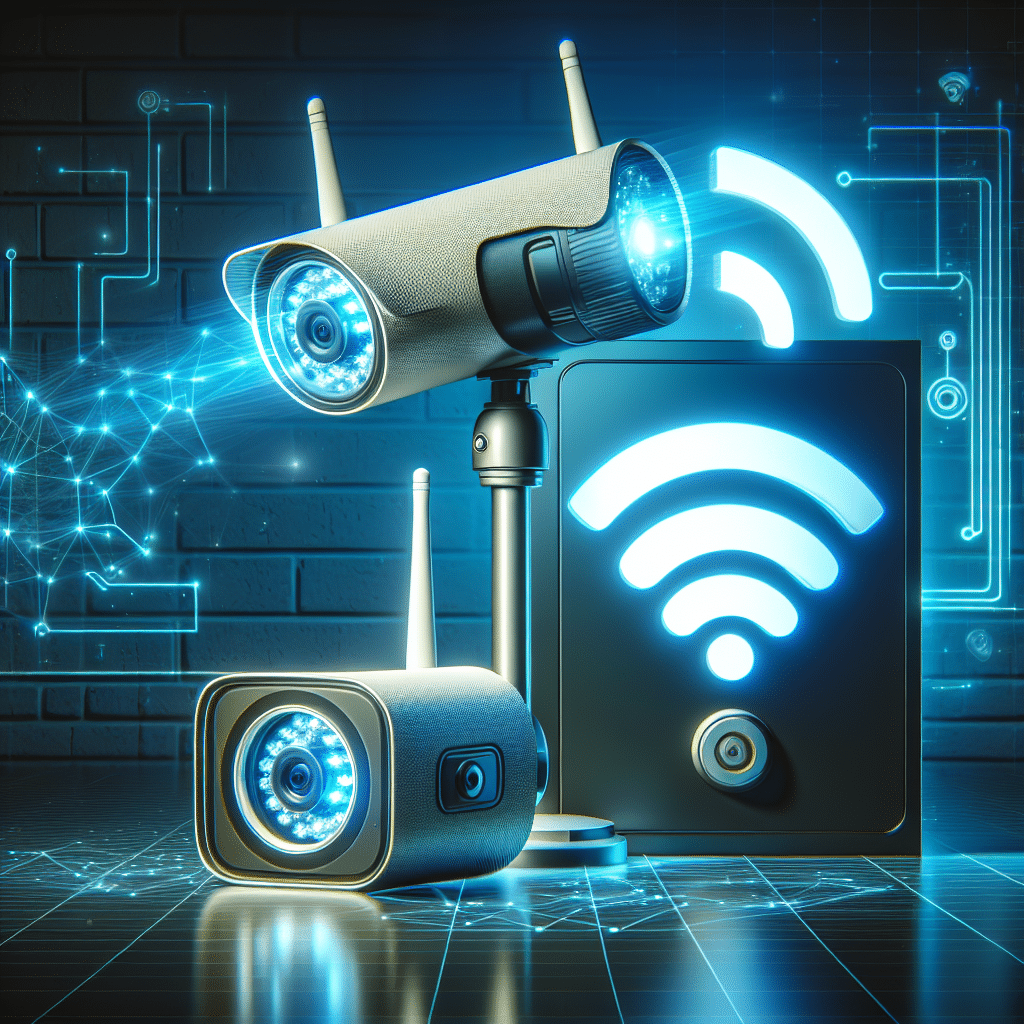What Are Wi-Fi Enabled Security Cameras?
Wi-Fi enabled security cameras are advanced surveillance devices that use wireless technology to transmit video and audio data to a remote location via an internet connection. These cameras can be accessed through smartphones, tablets, or computers, allowing users the flexibility to monitor their surroundings in real-time from virtually anywhere.
Key Features of Wi-Fi Enabled Security Cameras
1. Remote Access and Control
One of the most beneficial features of Wi-Fi security cameras is remote access. Users can view live footage, receive notifications, and even control camera settings via mobile apps or web platforms. This level of accessibility provides peace of mind when away from home or during travel.
2. High-Definition Video Quality
Many Wi-Fi cameras support high-definition video resolutions, such as 1080p or even 4K. This ensures that footage is clear and detailed, making it easier to identify intruders or monitor specific areas. HD video quality is crucial in security scenarios where clarity can make a significant difference.
3. Night Vision
Most modern Wi-Fi security cameras come equipped with infrared night vision capabilities. This feature allows the cameras to capture high-quality images and videos in low-light or complete darkness, ensuring 24/7 surveillance capability.
4. Motion Detection and Alerts
Wi-Fi security cameras often include advanced motion detection technology. When motion is detected, users receive real-time alerts via push notifications on their devices. This immediate feedback enables prompt responses to potential threats.
5. Two-Way Audio
Wi-Fi cameras with built-in microphones and speakers offer two-way audio communication. This feature allows homeowners to listen in on activities in real-time and even communicate directly with visitors or intruders, enhancing security and convenience.
6. Cloud and Local Storage Options
Many Wi-Fi security cameras provide both cloud and local storage for recorded video footage. Cloud storage offers the advantage of offsite storage, securing recordings in case of theft, while local storage on SD cards minimizes reliance on third-party services.
Benefits of Using Wi-Fi Enabled Security Cameras
1. Enhanced Security
Wi-Fi security cameras provide significant enhancements to personal and property security. With remote access and instant alerts, users can monitor their premises in real-time and respond swiftly to suspicious activities.
2. Ease of Installation
Compared to traditional security systems, Wi-Fi cameras typically require simpler installation processes. Most devices are designed for easy setup, often only needing a power source and a stable Wi-Fi connection.
3. Cost Efficiency
Many models of Wi-Fi security cameras are more affordable than traditional wired systems. They eliminate the need for extensive cabling or additional hardware, making them an attractive option for budget-conscious consumers.
4. Versatility
Wi-Fi enabled surveillance cameras can be utilized in various settings, including homes, offices, retail stores, and public spaces. Their adaptability allows for monitoring both indoor and outdoor areas, offering protection against various security threats.
Choosing the Right Wi-Fi Security Camera
When selecting a Wi-Fi security camera, several factors should be considered:
1. Resolution
Higher resolution provides clearer images, essential for identifying faces or license plates. Look for cameras with at least 1080p resolution for adequate clarity.
2. Field of View
A wider field of view means a larger area can be monitored. Consider cameras with adjustable lenses or those designed for specific applications, like panoramic views.
3. Weather Resistance
For outdoor use, ensure the camera is rated for weather resistance, typically designated by IP ratings. A camera with at least an IP65 rating will withstand exposure to rain and dust.
4. Power Source
Wi-Fi security cameras can be powered through batteries, AC adapters, or PoE (Power over Ethernet). Choose based on installation locations and convenience.
5. Compatibility with Smart Home Devices
If integrating into a smart home ecosystem, ensure compatibility with other devices like smart assistants (Amazon Alexa, Google Assistant) and home automation systems.
Popular Brands of Wi-Fi Enabled Security Cameras
Several brands have established themselves in the market, each offering robust options for consumers:
1. Arlo
Arlo is known for its high-quality wireless security cameras, featuring advanced motion detection, night vision, and cloud storage options.
2. Ring
Famous for its doorbell cameras, Ring also offers a variety of indoor and outdoor security cameras with motion detection and two-way audio.
3. Nest
Nest cameras provide seamless integration with other Google Nest products, offering smart features, high-resolution video, and motion alerts.
4. Wyze
Wyze offers budget-friendly options without sacrificing quality, including smart home integration and cloud storage subscriptions.
Protecting Your Wi-Fi Security Camera
As with any tech device connected to the internet, Wi-Fi security cameras can be vulnerable to hacking. Here are strategies to protect them:
1. Change Default Passwords
Upon installation, immediately change any default passwords to create unique, strong passwords.
2. Enable Two-Factor Authentication
Utilize two-factor authentication (2FA) if available, adding an extra layer of security for account access.
3. Keep Firmware Updated
Regularly update the camera’s firmware to ensure it has the latest security patches and features.
4. Use a Secure Wi-Fi Network
Ensure your home Wi-Fi network is secure; utilize WPA3 encryption for optimal protection.
5. Disable Unnecessary Features
If certain features, such as remote access, are not needed, consider disabling them to minimize exposure to vulnerabilities.
Conclusion
Wi-Fi enabled security cameras have transformed how individuals approach security and surveillance. With their advanced features and accessibility, they provide a reliable solution to both residential and commercial security needs. By carefully selecting a camera that meets individual requirements and implementing best security practices, users can ensure a safer environment for themselves and their loved ones.
